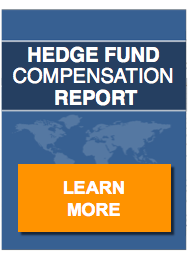In a time of increased redemptions and closures, the hedge fund industry is facing difficult challenges. How to retain and raise assets has become a widespread concern on both sides of the Atlantic. Hedge fund standards are an important element in this conversation.
In the face of this commercial challenge lies the reality of imminent regulation and unavoidable compliance cost that will be levied against the bottom line of an already bruised and battered industry.
Three years on and still in the midst of the greatest global recession since the 1930s it seems an appropriate time to re-evaluate the importance of the standards of the Hedge Fund Standards Board (HFSB) in the EU and the President’s Working Group (PWG) in the US and how they can help rather than hinder in these difficult times for the hedge fund industry in the marketing effort.
Background to the HFSB and PWG and Summary of the Standards
The HFSB, as the custodian to the standards (Standards) formulated by the Hedge Fund Working Group, was established in 2007 with a membership of 14 leading hedge fund managers, most of which are UK-based. Currently this number stands at over 60 and includes several overseas hedge fund managers. As a custodian to the Standards, the HFSB has the mandate of updating the Standards as the industry evolves and faces new challenges.
The Standards entrusted to the HFSB number 28 in total and cover disclosure, valuation, risk management, fund governance, and shareholder conduct.
The PWG includes the heads of the U.S. Treasury Department, the Federal Reserve, the Securities and Exchange Commission and the Commodity Futures Trading Commission. In 2008 a set of Best Practices were formulated that would act as a guide to the hedge fund industry in the US.
The Best Practices were separated into two groups. The Best Practices for asset managers call on hedge funds to adopt comprehensive standards in all aspects of their business, including the critical areas of disclosure, valuation of assets, risk management, business operations, compliance and conflicts of interest. The Best Practices for investors include a Fiduciary’s Guide and an Investor’s Guide.
In this article, we refer to both HFSB Standards and PWG Best Practices as “Standards”.
Learning from the Past
Many of the political concerns surrounding hedge funds emanate from debacles such as Long Term Capital Management, Amaranth and more recently Madoff. However, in adopting the Standards, investors should be comforted that those hedge fund managers that have adopted the Standards will not place themselves in such a situation or that such a debacle could or would occur within their walls.
Therefore, when asking the question if a set of standards will help hedge funds during these times of economic crisis, the answer must be yes, because they will benefit investors by providing a certain level of comfort against mismanagement or fraudulent valuation of their investment.
However, for those in the UK it must be remembered that the HFSB is an industry construct and not a supervisory body and just because a hedge fund manager has voluntarily adopted the Standards and attested to conformity, that does not mean that they actually do conform to the Standards or that they will not knowingly or negligently breach them in the future.
The PWG has its origins in the Treasury and is therefore set up under legislation and its status is fundamentally different to that of the HFSB.
Helping Through Windy Times
 As hedge fund managers formulate strategies to retain and raise assets under management, the Standards must be seen as a positive tool through which this objective can be achieved. In windy weather a kite without string to hold it will paradoxically fall to the ground rather than fly higher.
As hedge fund managers formulate strategies to retain and raise assets under management, the Standards must be seen as a positive tool through which this objective can be achieved. In windy weather a kite without string to hold it will paradoxically fall to the ground rather than fly higher.
Although important, it is not the wind that is the most important to making it fly. It is also not the kite itself that is the most important. The most important factor in a kite flying is the string that gives stability to the kite and prevents it from crashing to the ground. It does not restrict but rather facilitates the kite flying.
This is what the Standards can do for a hedge fund manager during windy times. By having appropriate disclosures, valuation procedures, risk management practices, fund governance and standards on shareholder conduct, they can act as the string that prevents them from blowing away or falling to the ground. As a “kitemark” the Standards will signify to prospective investors that a hedge fund manager has achieved, and is voluntarily abiding by, predefined and accepted standards of conduct.
Nobody ever describes the string of a kite as being restrictive because it is the manner by which the kite is able to majestically fly. However, this may be different if the string was substituted with a rope or chain. Similarly, the Standards should be seen as appropriate, analogous to the string and not the rope or chain.
The Upside of Standards
Surviving the storms of the current economic crisis is no doubt on the minds of every hedge fund manager. Retaining and raising assets is central to this survival.
By adopting the Standards, investors gain confidence that certain standards and best practices are being achieved and maintained by the hedge fund manager. In essence the investor will be assured that there is a piece of string keeping the kite flying.
This is part of being a good capital markets citizen and should be at the forefront of every hedge fund manager’s mind in formulating strategy as the hedge fund industry forges its way through the current economic crisis. This should also be on the mind of every marketing manager who maintains a focus of retaining and raising assets.
About the Author
Thomas Bullman is the founder of The Hedge Fund Society and the Hedge Fund College and a noted resource regarding regulatory concepts, implications, and current developments within the hedge fund industry in both the European Union and United States.


